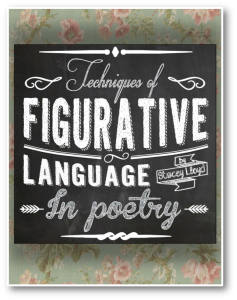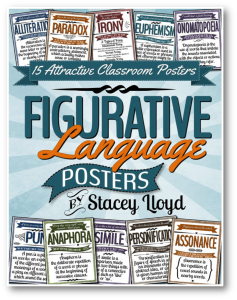5 Reasons Why I Love Teaching Figurative Language

1. It’s all around us.
I regularly hear the question, ‘Why do we need to learn this?’ For figurative language the answer is simple: Because it’s all around you. From popular song lyrics to political speeches, figurative language is prevalent. This makes teaching relevant as students can actually engage with the application of this linguistic technique in their everyday lives. I ask them to bring in cuttings of newspaper headlines, to present their favorite song lyrics, to do collages of advertising slogans – it’s fun and engaging. Personally, this is reason enough for me to enjoy teaching figurative language: It’s relevant.
2. It helps students make sense of poetry.
My students often struggle to understand poetry. They complain that they just don’t get it. But poems aren’t codes to be broken or riddles to be solved. They are pieces of art to be appreciated and enjoyed. Yet sometimes this appreciation comes through understanding the intricacies of language. This is where the comprehension of figurative language becomes significant – when students are able to analyze the figurative language techniques of a poem, they gain a better understanding of the meaning and the beauty in the carefully woven words.
3. It helps students to become critical readers.
Students hear figurative language all the time, but do they fully comprehend it, and can they explain it? For example, when they hear the Seely Mattress slogan – “Sleeping on a Seely is like sleeping on a cloud.” – Can they identify the alliteration and understand its purpose? Can they explain the simile and elucidate the comparison being made? When they can do this, it will help them to be critical readers and will their aid their comprehension skills.
4. It helps them to become better writers.
Figurative language adds depth and beauty to writing. Compare the difference between writing, ‘Sammy felt depressed,’ with writing, ‘Sammy felt as though he had a perpetual dark cloud hanging over his head.’ The figurative language makes the words more visually stimulating and interesting. If students can learn to understand different figurative language techniques, and then be able to actually implement them in their own work, their writing will become more sophisticated and creative.
5. Figurative language can be simply beautiful.
I heard a couple having an argument in a queue the other day (which was a little awkward as there really was no way to escape eavesdropping). Interestingly though, the guy said to his girlfriend, ‘ Sometimes your love is like a stuck-record!’ Once I had got past the fact that this was a rather mean thing to say – especially so publically – I started to think about the simile and what he meant by this comparison. I realized that it was a way for him to make sense of his feelings and express them. There is such beauty in using figurative language to get to the heart of how we feel or what we think. The comparison in a metaphor, the dramatic exaggeration of hyperbole, the softening of a harsh situation conveyed in an euphemism – they all help to communicate emotion and imagery and can be startlingly beautiful, humorous or even emotively piercing.
Teaching students the beauty of language is why I love teaching English; teaching figurative language provides a tangible experience of the power of words.
If you would like to some more tools for teaching figurative language, I have developed the following products:
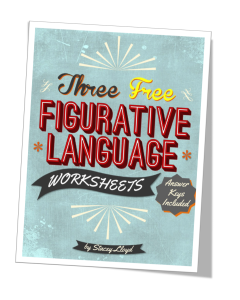
Three FREE worksheets which make figurative language relevant and engaging. Worksheets also come with full answer keys.
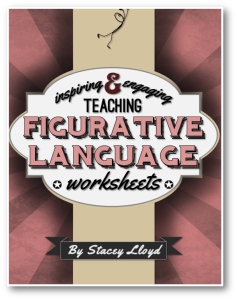
Do you want to help your students understand figurative language techniques? These worksheets will do just that. Each worksheet contains information and examples on each technique (which can be cut off and make for great notes in their books), as well as practice exercises. Answer keys are also provided.
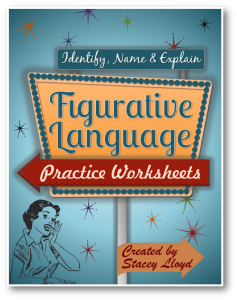
Ok, so your students know the names of different figurative language techniques by the time they get to Middle/High School. But can they identify them in use and then explain what they mean and why they are effective? These worksheets will help them with this process.
